Raccoons, horseshoe whip snakes and pond sliders, among other species, are the new fauna threatening the native island fauna.
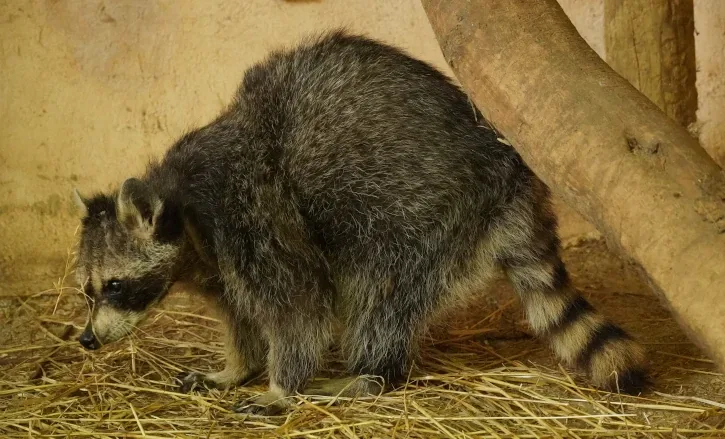
The boreal raccoon roams freely in the Serra de Tramuntana. Photos. COFIB.
Don’t be surprised if one day while hiking in the Serra de Tramuntana you come across a friendly raccoon with bright eyes and a ringed tail. This innocent-looking mammal, typical of North America, roams the mountain range as if it were Yellowstone Park. The problem is that its voracity is endangering the ecological balance of the area. And it is only one of half a dozen invasive species catalogued as highly dangerous that currently exist in the Balearic Islands. Horseshoe whip and ladder snakes, the pond slider, the feral goat and the carp complete the list.
Agent of change
“An invasive species is one that arrives new to a territory and represents an agent of change on local biodiversity”, explains Tomàs Bosch, head of the Servei de Protecció d’Espècies del Govern Balear. This external fauna poses a “serious threat” to native species -although there is practically no threat to humans- because “it either eats them or displaces them. In some cases this impact stabilises, but in others it can lead to the disappearance of native species,” Bosch adds.
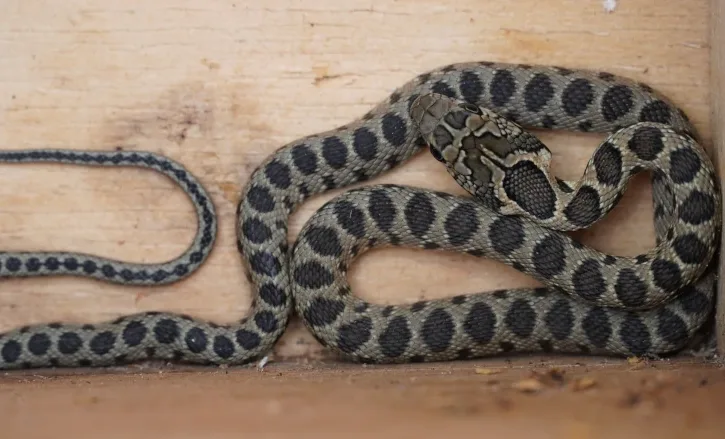
Horseshoe whip snakes arrived in Eivissa hidden in imported ornamental trees.
The main routes of entry are “the ports and airports of the islands, with man as the main culprit,” says Bosch. The dreaded horseshoe whip snakes, the great danger to the native lizards, arrived in Eivissa hidden in the soil of flowerpots and in the trunks of ornamental trees imported from the mainland. From the port they spread around the island and then reproduced exponentially due to the lack of natural predators. Between 2016 and 2023 around 10,000 specimens were removed mainly in the Pitiüses, but also occasionally in Mallorca.
Trade in exotic species
Other animals arrived on the islands as a result of the booming, and once uncontrolled, trade in exotic species. This is the case of the now eradicated coatis and monk and ringneck parrots, as well as raccoons, of which some 1,900 specimens have been captured in Mallorca since 2011. “There is no species that controls it, as there should be in a balanced natural habitat. The problem is that it can consume all kinds of resources, from insects and protected species to plants, seeds and fruit. It also acts as a disease-carrying species”, says the manager of the Consorci de Recuperació de la Fauna de Illes Balears (COFIB), Lluís Parpal. Its diet includes the ferreret, a species endemic to the Balears and in danger of extinction.
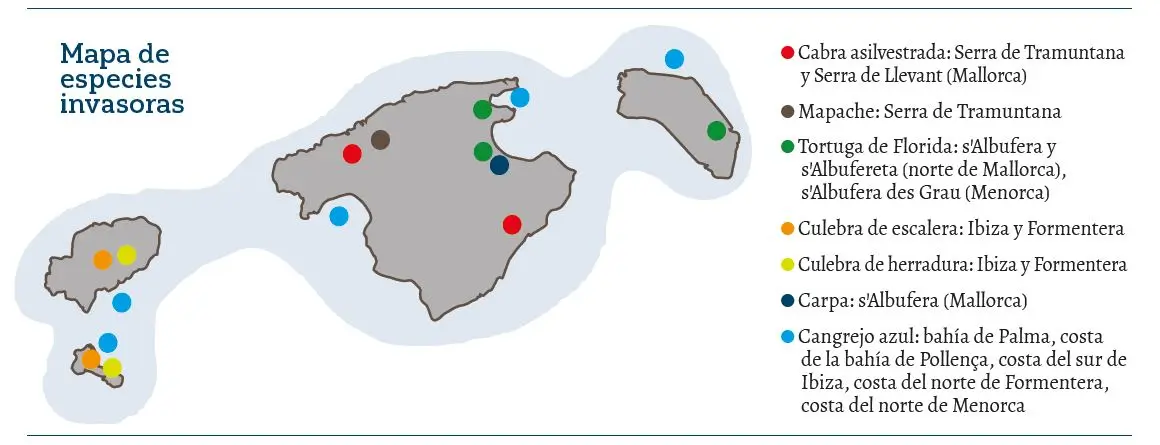
There are three ways of tackling this problem: administrative, with the creation of specific bodies, such as the COFIB, and action protocols; legislative, with the approval of regulations that make it impossible “or at least complicate” the arrival of these species -in 2023, a regional decree established periods in which large ornamental trees could not enter the Pitiüses. Likewise, since 2013 exists a Spanish catalogue of invasive exotic species that prohibits their commercialisation-; and education and public awareness, because “when someone buys a pet, they have to think that it is forever”, Bosch points out.
In fact, the pond sliders that populate s’Albufera in Mallorca and Es Grau in Menorca were released due to the misunderstood goodwill of their owners, and their voracity is displacing the native tortoises from the wetlands of both islands.
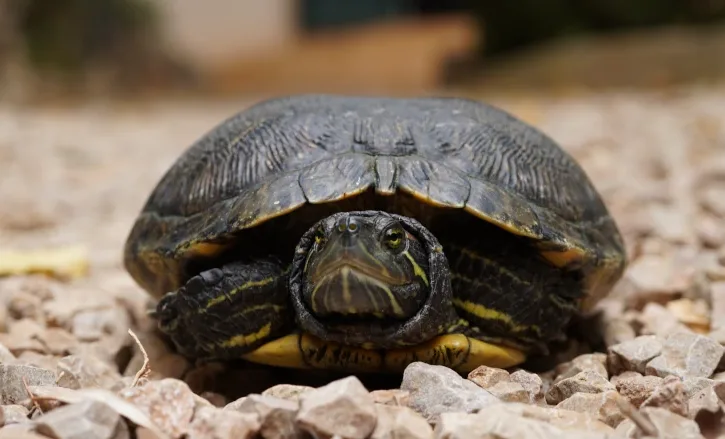
The pond slider populates s’Albufera in Mallorca and Es Grau in Menorca.
At least the population is becoming more aware of the issue. The collaboration of hundreds of people was key in the eradication of the Asian hornet, and dozens of volunteers are placing snake traps in the Pitiüses. The COFIB also offers citizens the Línea Verde app to report incidents of invasive species in the Balears, a boost to eradicate this threat to the delicate natural environment of the islands.


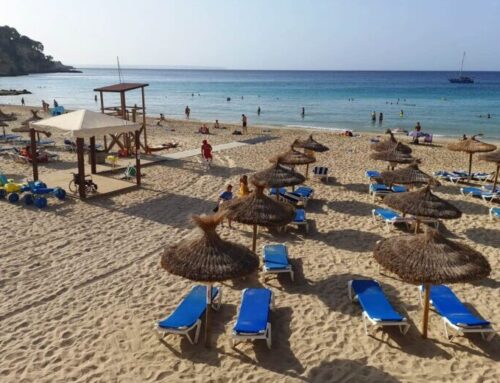
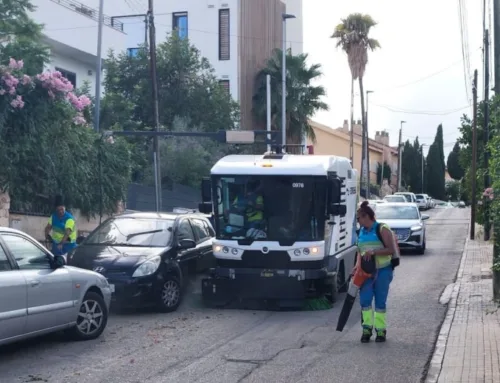
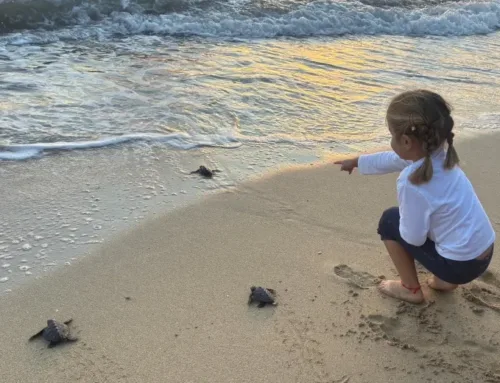
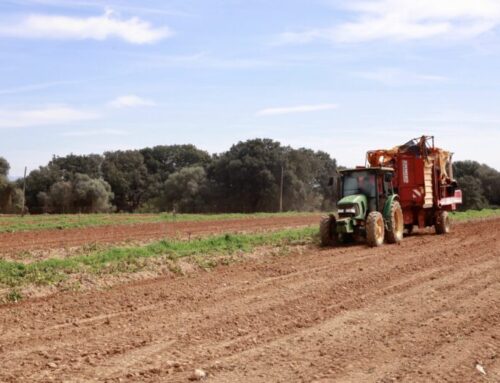
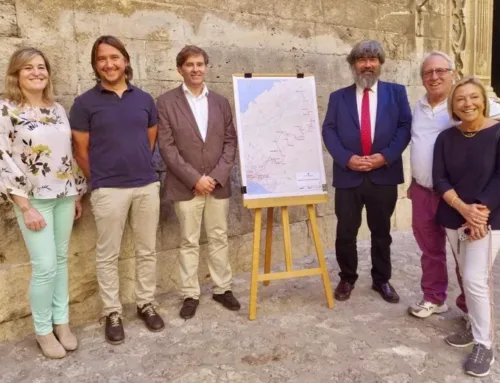

Leave A Comment